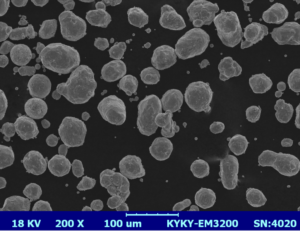Visão geral de Manufatura aditiva por feixe de elétrons (EBAM)
Imagine ser capaz de construir peças de metal complexas camada por camada com precisão incrível e desperdício mínimo. Parece algo saído de um filme de ficção científica, certo? Bem, bem-vindo ao mundo da Fabricação Aditiva por Feixe de Elétrons (EBAM). Esta tecnologia de ponta usa um feixe de elétrons para derreter pó ou fio de metal, criando objetos 3D com detalhes intrincados e propriedades robustas.
O EBAM se destaca no cenário da fabricação aditiva por sua capacidade de produzir componentes de alta qualidade e alta resistência, particularmente para aplicações aeroespaciais, automotivas e médicas. Vamos mergulhar nos detalhes de como o EBAM funciona, os tipos de pós de metal usados, suas propriedades e por que essa tecnologia está revolucionando a fabricação.
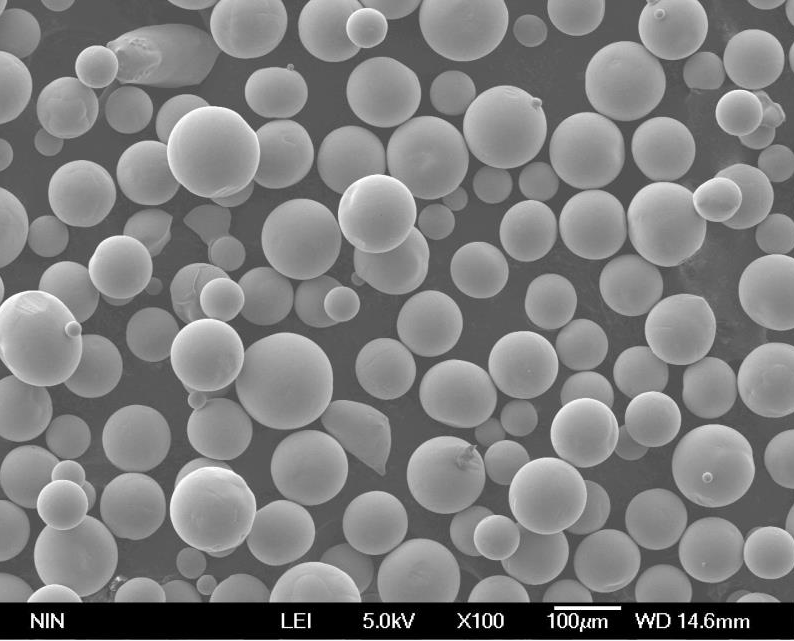
Tipos de Pós de Metal para EBAM
| Pó metálico | Composição | Propriedades | Características |
|---|---|---|---|
| Titânio (Ti-6Al-4V) | Ti, Al, V | Alta resistência, resistente à corrosão | Leve e biocompatível |
| Inconel 718 | Ni, Cr, Fe, Nb, Mo | Resistência a altas temperaturas, durabilidade | Ideal para aeroespacial e turbinas |
| Aço inoxidável (316L) | Fe, Cr, Ni, Mo | Resistência à corrosão, alta resistência | Comum nas indústrias médica e alimentícia |
| Alumínio (AlSi10Mg) | Al, Si, Mg | Leve, com boas propriedades térmicas | Usado em automotivo e aeroespacial |
| Cobalto-cromo (CoCr) | Co, Cr, Mo | Resistente ao desgaste e de alta resistência | Popular em implantes médicos |
| Aço para ferramentas (H13) | Fe, Cr, Mo, V | Alta tenacidade e resistência ao desgaste | Usado em ferramentas e moldes |
| Liga de Níquel (Hastelloy X) | Ni, Cr, Fe, Mo | Resistente à oxidação e corrosão | Usado nas indústrias química e aeroespacial |
| Cobre (Cu) | Cu | Excelente condutividade, ductilidade | Usado em aplicações elétricas e térmicas |
| Titânio (CP-Ti) | Ti | Alta relação resistência/peso, resistente à corrosão | Usado em aeroespacial e médico |
| Aço Maraging (18Ni300) | Fe, Ni, Co, Mo | Alta resistência e tenacidade | Usado no setor aeroespacial e em ferramentas |
Composição de Manufatura aditiva por feixe de elétrons (EBAM)
A magia do EBAM reside em seus materiais e sua composição. Os materiais mais comuns usados são pós ou fios de metal, cada um escolhido por propriedades específicas que se adequam a várias aplicações industriais. Vamos detalhar alguns dos pós de metal mais populares usados no EBAM:
- Titânio (Ti-6Al-4V): Uma mistura de titânio, alumínio e vanádio, esta liga oferece alta resistência, propriedades leves e excelente resistência à corrosão. É particularmente favorecido em implantes aeroespaciais e médicos devido à sua biocompatibilidade.
- Inconel 718: Composto por níquel, cromo, ferro, nióbio e molibdênio, o Inconel 718 é conhecido por sua resistência a altas temperaturas e durabilidade, tornando-o perfeito para motores de turbina e outras aplicações aeroespaciais.
- Aço Inoxidável (316L): Esta liga à base de ferro, com cromo, níquel e molibdênio, é celebrada por sua resistência à corrosão e alta resistência, tornando-a ideal para dispositivos médicos e equipamentos da indústria alimentícia.
- Alumínio (AlSi10Mg): Com uma composição de alumínio, silício e magnésio, esta liga é leve e possui boas propriedades térmicas, tornando-a uma favorita nos setores automotivo e aeroespacial.
- Cobalto-Cromo (CoCr): Uma liga de cobalto, cromo e molibdênio, o CoCr é resistente ao desgaste e de alta resistência, comumente usado em implantes médicos.
- Aço para Ferramentas (H13): Esta liga de aço contém ferro, cromo, molibdênio e vanádio, conhecida por sua alta tenacidade e resistência ao desgaste, usada na fabricação de moldes e ferramentas.
- Liga de Níquel (Hastelloy X): Composta por níquel, cromo, ferro e molibdênio, esta liga é resistente à oxidação e corrosão, amplamente utilizada nas indústrias de processamento químico e aeroespacial.
- Cobre (Cu): O cobre puro é conhecido por sua excelente condutividade elétrica e térmica, usado em várias aplicações elétricas e de troca de calor.
- Titânio (CP-Ti): O titânio comercialmente puro oferece uma alta relação resistência-peso e excelente resistência à corrosão, adequado para aplicações aeroespaciais e médicas.
- Aço Maraging (18Ni300): Esta liga de aço, composta por ferro, níquel, cobalto e molibdênio, oferece alta resistência e tenacidade, ideal para aplicações aeroespaciais e de ferramentas.
Características da Fabricação Aditiva por Feixe de Elétrons (EBAM)
O EBAM não se trata apenas de derreter metal; trata-se de precisão, eficiência e qualidade. Aqui está um olhar detalhado sobre as características que fazem o EBAM se destacar:
- Precisão: O EBAM pode produzir designs intrincados com tolerâncias apertadas, essencial para componentes de alto desempenho nos campos aeroespacial e médico.
- Eficiência: Ao usar um feixe de elétrons, o EBAM pode derreter rapidamente pós ou fios de metal, acelerando significativamente o processo de fabricação em comparação com os métodos tradicionais.
- Versatilidade: O EBAM é compatível com uma ampla gama de metais e ligas, desde alumínio leve até titânio super forte e Inconel resistente ao calor.
- Resistência e Durabilidade: As peças produzidas com EBAM exibem excelentes propriedades mecânicas, muitas vezes superando as feitas por técnicas de fabricação convencionais.
- Desperdício Mínimo: O EBAM é um processo aditivo, o que significa que constrói peças camada por camada, usando apenas o material necessário, o que minimiza o desperdício e reduz os custos.
- Escalabilidade: Seja produzindo um único protótipo ou fabricação em larga escala, o EBAM oferece escalabilidade para atender a várias necessidades de produção.
- Personalização: O EBAM permite a fácil personalização de peças, tornando-o ideal para criar componentes sob medida adaptados a requisitos específicos.

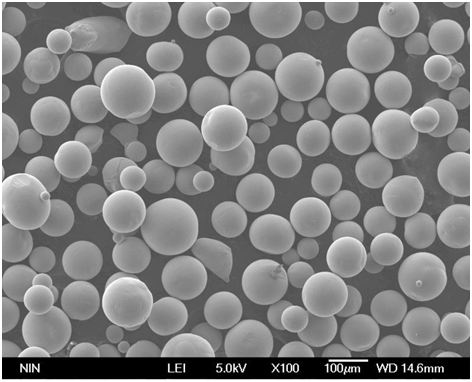

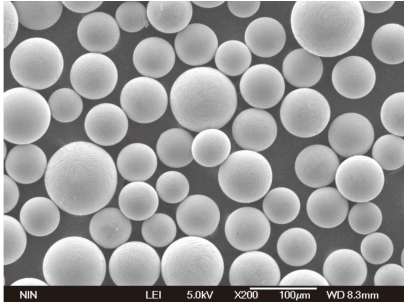
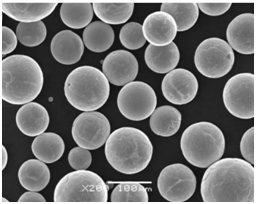
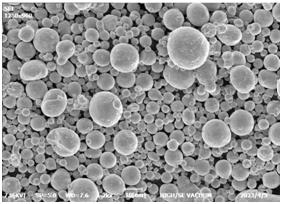
Vantagens da Fabricação Aditiva por Feixe de Elétrons (EBAM)
Por que você deve considerar a EBAM para suas necessidades de fabricação? Aqui estão algumas razões convincentes:
- Flexibilidade de design: A EBAM permite geometrias complexas que muitas vezes são impossíveis com os métodos de fabricação tradicionais. Pense em estruturas de treliça intrincadas ou canais internos que aprimoram a funcionalidade sem adicionar peso.
- Eficiência do material: Como a EBAM usa apenas a quantidade necessária de material, ela reduz drasticamente o desperdício, tornando-a uma opção mais sustentável em comparação com os processos de fabricação subtrativos.
- Protótipos Econômicos: Com a EBAM, a criação de protótipos se torna mais rápida e barata, permitindo iterações e inovações mais rápidas sem os altos custos de ferramentas e moldes.
- Propriedades Mecânicas Aprimoradas: As peças produzidas pela EBAM geralmente exibem propriedades mecânicas superiores devido à microestrutura fina alcançada por meio do processo de resfriamento rápido.
- Altas Taxas de Deposição: A EBAM pode atingir altas taxas de deposição, o que se traduz em tempos de produção mais rápidos, o que é crucial para as indústrias que exigem uma resposta rápida.
- Tempos de Entrega Reduzidos: Ao eliminar a necessidade de ferramentas extensivas e permitir a produção rápida, a EBAM reduz significativamente os prazos de entrega, ajudando as empresas a lançar produtos no mercado mais rapidamente.
Aplicações da Fabricação Aditiva por Feixe de Elétrons (EBAM)
A versatilidade e precisão da EBAM abrem uma ampla gama de aplicações em vários setores. Vamos explorar algumas áreas-chave onde a EBAM está causando um impacto significativo:
| Setor | Aplicativo | Benefícios |
|---|---|---|
| Aeroespacial | Componentes do motor, peças estruturais | Leve, alta resistência, flexibilidade de design |
| Automotivo | Peças personalizadas, componentes leves | Peso reduzido, desempenho aumentado |
| Médico | Implantes, próteses, instrumentos cirúrgicos | Biocompatibilidade, personalização |
| Energia | Lâminas de turbina, trocadores de calor | Resistência a altas temperaturas, eficiência |
| Ferramentas | Moldes, matrizes, ferramentas personalizadas | Durabilidade, precisão, prazos de entrega reduzidos |
| Eletrônicos | Dissipadores de calor, peças condutoras | Excelente condutividade térmica e elétrica |
| Defesa | Componentes de armas, blindagem leve | Resistência, durabilidade, propriedades leves |
Especificações, Tamanhos, Graus, Padrões para Materiais EBAM
Quando se trata de EBAM, entender as especificações, tamanhos, graus e padrões dos materiais é crucial para garantir o desempenho e a qualidade desejados. Aqui está uma tabela abrangente para guiá-lo:
| Material | Especificações | Tamanhos | Notas | Padrões |
|---|---|---|---|---|
| Titânio (Ti-6Al-4V) | ASTM B348, AMS 4928 | 10-45 µm | Grau 5 | ASTM F2924, AMS 4998 |
| Inconel 718 | ASTM B637, AMS 5662 | 15-53 µm | – | AMS 5663, ASTM F3055 |
| Aço inoxidável (316L) | ASTM A276, AMS 5653 | 15-45 µm | – | ASTM F138, ASTM F799 |
| Alumínio (AlSi10Mg) | DIN EN 1706 | 20-63 µm | – | ISO 3522 |
| Cobalto-cromo (CoCr) | ASTM F75, ISO 5832-4 | 15-45 µm | – | ASTM F1537 |
| Aço para ferramentas (H13) | ASTM A681, AMS 6487 | 15-53 µm | – | ASTM A681 |
| Liga de Níquel (Hastelloy X) | ASTM B435, AMS 5754 | 15-45 µm | – | AMS 5536, ASTM B619 |
| Cobre (Cu) | ASTM B170, ASTM B224 | 15-45 µm | ASTM F68 | |
| Titânio (CP-Ti) | ASTM B348, ASTM F67 | 10-45 µm | Grau 1, Grau 2 | AMS 4900, ASTM F1580 |
| Aço Maraging (18Ni300) | ASTM A538, AMS 6521 | 15-45 µm | AMS 6514, ASTM A538 |
Fornecedores e Detalhes de Preços para Materiais EBAM
Encontrar o fornecedor certo é crucial para garantir a qualidade e a consistência dos materiais EBAM. Aqui está uma lista de alguns fornecedores de renome, juntamente com detalhes de preços:
| Fornecedor | Material | Preço (por kg) | Contato |
|---|---|---|---|
| Tecnologia Carpenter | Titânio (Ti-6Al-4V) | $250 – $300 | www.carpentertechnology.com |
| Sandvik | Inconel 718 | $400 – $450 | www.materials.sandvik |
| Tecnologias de superfície da Praxair | Aço inoxidável (316L) | $150 – $200 | www.praxairsurfacetechnologies.com |
| Tecnologia LPW | Alumínio (AlSi10Mg) | $100 – $150 | www.lpwtechnology.com |
| Arcam AB | Cobalto-cromo (CoCr) | $350 – $400 | www.arcam.com |
| Höganäs | Aço para ferramentas (H13) | $180 – $220 | www.hoganas.com |
| Haynes International | Liga de Níquel (Hastelloy X) | $500 – $550 | www.haynesintl.com |
| Elementos americanos | Cobre (Cu) | $50 – $100 | www.americanelements.com |
| Centro de Processamento de Titânio | Titânio (CP-Ti) | $200 – $250 | www.titaniumprocessingcenter.com |
| Renishaw | Aço Maraging (18Ni300) | $300 – $350 | www.renishaw.com |
Prós e contras de Manufatura aditiva por feixe de elétrons (EBAM)
Como qualquer tecnologia, a EBAM vem com seu conjunto de vantagens e limitações. Aqui está uma análise comparativa:
| Vantagens | Desvantagens |
|---|---|
| Alta precisão e exatidão | Alto custo de configuração inicial |
| Redução do desperdício de material | Requer conhecimento e treinamento especializados |
| Capacidade de produzir geometrias complexas | Opções de materiais limitadas em comparação com outros métodos |
| Tempos de produção mais rápidos | Alto consumo de energia |
| Produtos finais fortes e duráveis | Tamanho de construção limitado |
| Personalização e flexibilidade | O pós-processamento geralmente é necessário |
| Altas taxas de deposição | O acabamento da superfície pode exigir trabalho adicional |

Perguntas frequentes
| Pergunta | Resposta |
|---|---|
| O que é EBAM? | A EBAM é um processo de impressão 3D que usa um feixe de elétrons para derreter pó de metal ou fio para construir peças camada por camada. |
| Como a EBAM difere de outros métodos de fabricação aditiva? | A EBAM usa um feixe de elétrons, oferecendo alta precisão e a capacidade de trabalhar com materiais de alta temperatura. |
| Quais materiais podem ser usados na EBAM? | Os materiais comuns incluem ligas de titânio, Inconel, aço inoxidável, ligas de alumínio e cobalto-cromo. |
| Quais são as principais aplicações da EBAM? | A EBAM é usada nas indústrias aeroespacial, automotiva, médica, de energia, ferramentas, eletrônicos e defesa. |
| A EBAM é econômica? | Embora a EBAM tenha altos custos de configuração inicial, ela reduz o desperdício de material e o tempo de produção, oferecendo economia de custos a longo prazo. |
| Quais são as limitações da EBAM? | A EBAM requer equipamentos e conhecimentos especializados, tem alto consumo de energia e é limitada pelo tamanho da construção. |
| Como a EBAM garante a qualidade da peça? | A EBAM oferece alta precisão, mas o pós-processamento pode ser necessário para o acabamento da superfície e para obter as propriedades desejadas. |
| A EBAM pode ser usada para produção em massa? | Sim, a EBAM é escalável e pode ser usada tanto para prototipagem quanto para produção em massa, dependendo da aplicação. |
| Quais são os benefícios ambientais da EBAM? | A EBAM produz o mínimo de desperdício e usa os materiais de forma eficiente, contribuindo para práticas de fabricação mais sustentáveis. |
| Como escolho o material certo para EBAM? | A escolha do material depende das propriedades e da aplicação necessárias. Consultar fornecedores e especialistas pode ajudar a tomar a decisão certa. |

